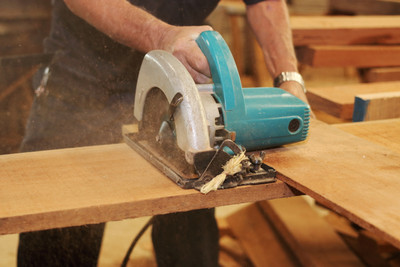Types of Circular Saw Blades & When to Use Each
POWERTEC on Oct 23rd 2025
Cutting Different Materials? You Need Different Blades.
A single circular saw can do a lot, but no single blade can do it all. Whether you’re cutting through framing lumber, plywood, or fine trim, each material requires a blade designed for its grain, density, and desired finish.
Each blade also differs in tooth material and geometry, from durable carbide-tipped teeth that stay sharp cut after cut to specialty TCG (grind) designs built for laminates and non-ferrous metals.
This quick guide breaks down the main types of circular saw blades, what each is built for, and which POWERTEC blade will help you get the job done right.
New to blade sizing or kerf width? Start with Circular Saw Blades 101: How to Choose the Right Blade.
1. Ripping Blades: Fast Cuts Along the Grain
When you’re cutting with the grain, speed and power matter. Ripping blades have fewer, flat-topped teeth that chew through solid lumber quickly while keeping your saw cool.
- Tooth Count: 20–30 teeth
- Tooth Shape: Flat-Top Grind (FTG)
- Best For: Framing, deck building, and rough carpentry
- Result: Fast feed, rougher edge
Recommended POWERTEC Blade: 7-1/4″ 24T Carbide Blade (14015) – built for long-lasting performance in rip cuts and framing projects.
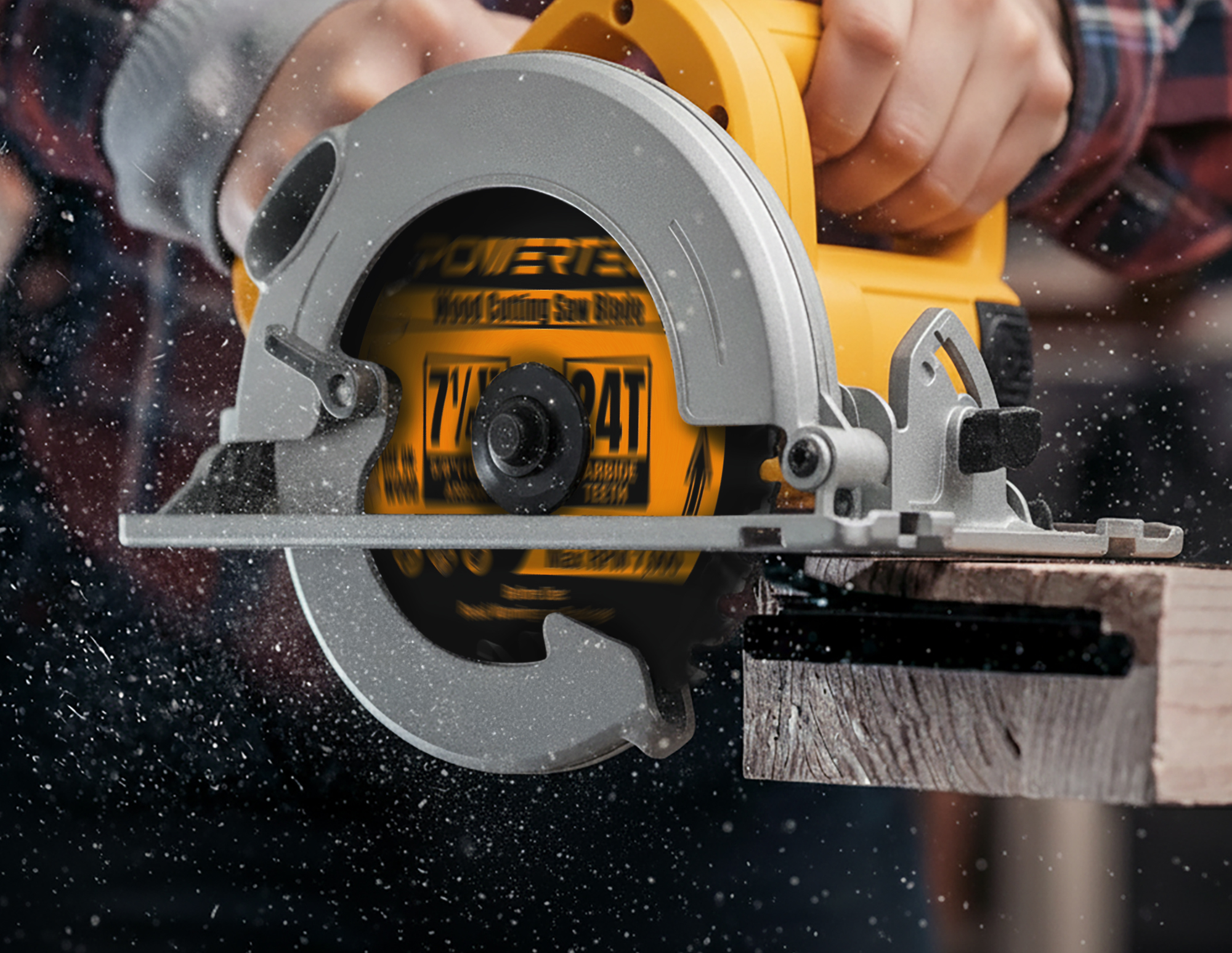
2. Crosscut Blades: Clean Cuts Across the Grain
Crosscut blades specialize in smooth, precise finishes. With more teeth and sharper angles, they slice across wood fibers instead of tearing them.
- Tooth Count: 60–80 teeth
- Tooth Shape: Alternate Top Bevel (ATB)
- Best For: Hardwood, trim, and finish work
- Result: Smooth, splinter-free edge
Recommended POWERTEC Blade: 7-1/4″ 60T ATB Finish Blade (14016) – ideal for trim, hardwood, and projects that demand clean, show-ready cuts.
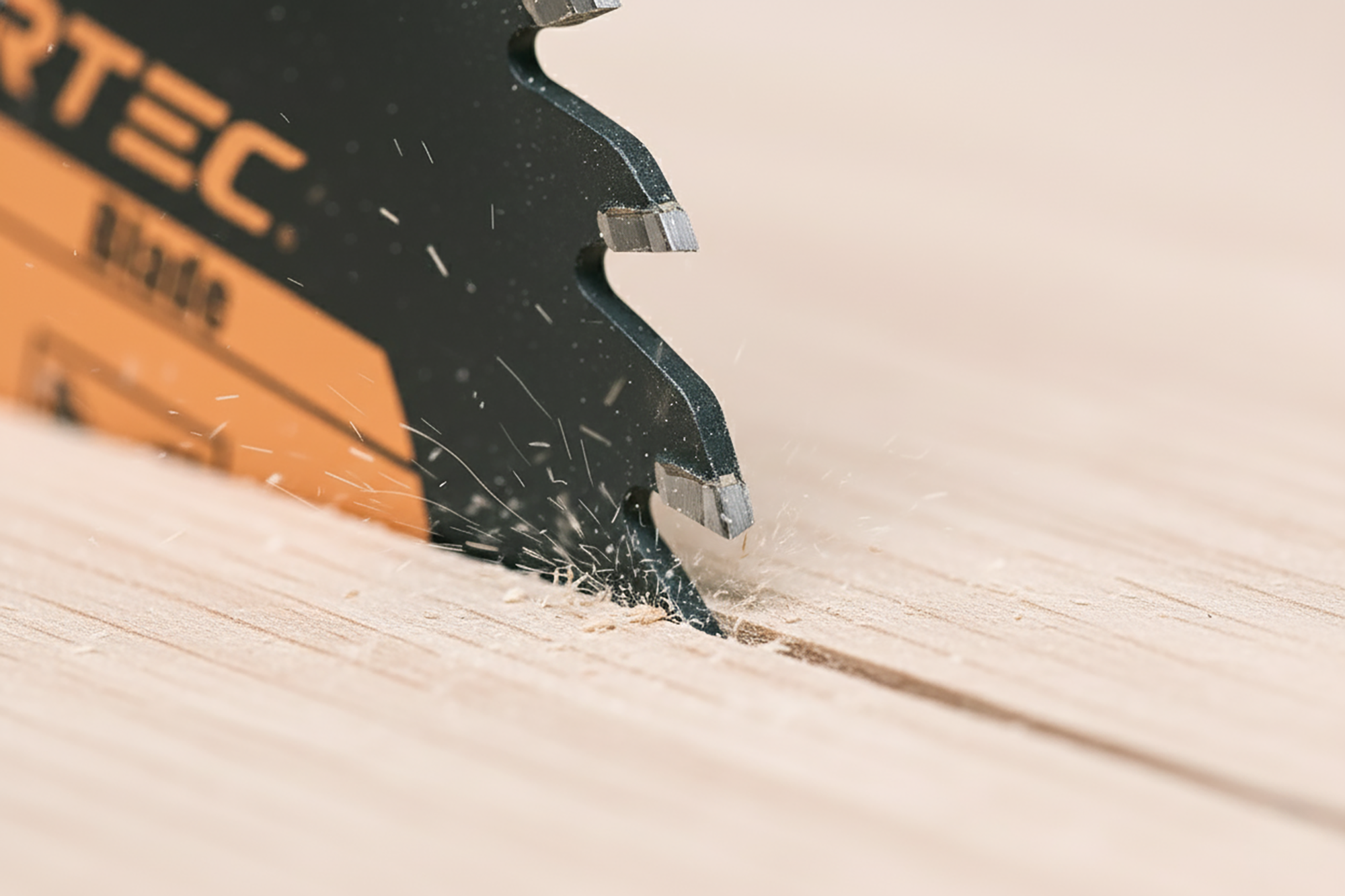
3. Combination Blades: One Blade That Does (Almost) Everything
If you’re a weekend DIYer or don’t want to swap blades constantly, a combination blade offers versatility. It blends ripping and crosscutting ability for balanced performance.
- Tooth Count: 40–50 teeth
- Tooth Pattern: Groups of 4 ATB + 1 FTG
- Best For: General woodworking, remodeling, and mixed materials
- Result: Clean enough for trim, fast enough for framing
Recommended POWERTEC Blade: 6-1/2″ 40T General Purpose Blade (14023) – your go-to for mixed projects, plywood, and home renovations.
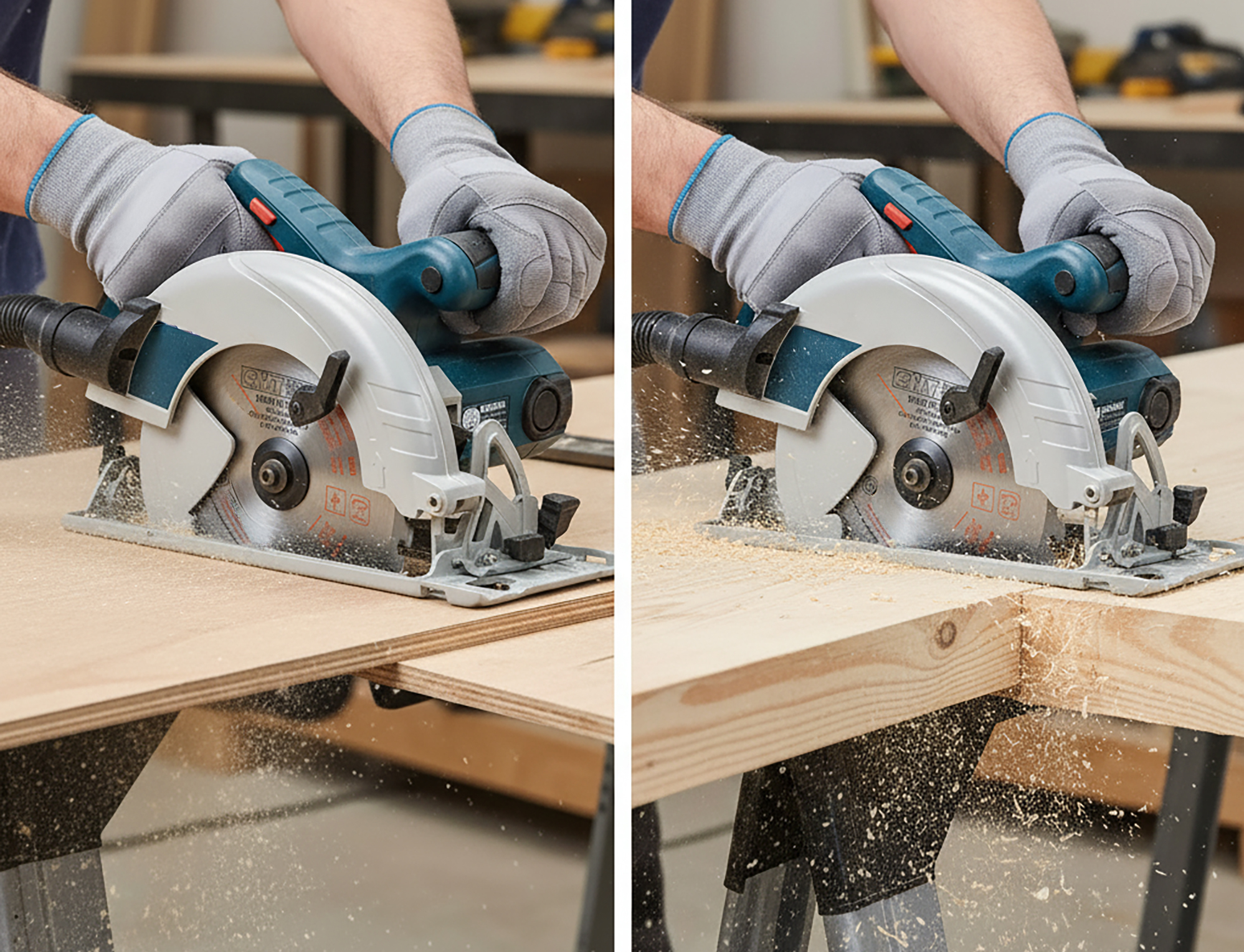
4. Plywood, MDF & Laminate Blades: For Chip-Free Cuts
Thin sheet goods require high-tooth-count blades that shear cleanly through delicate layers. Special grinds minimize tear-out and leave a professional edge.
- Tooth Count: 60–100 teeth
- Tooth Shape: High-ATB or Triple Chip Grind (TCG)
- Best For: Plywood, MDF, melamine, veneer, laminate
- Result: Smooth, splinter-free cuts
Recommended POWERTEC Blades:
- 7-1/4″ 60T Finish Blade (14016) – excellent for plywood and veneers.
- 10″ 80T Table Saw Blade (14027) – for fine furniture and cabinetry cuts.
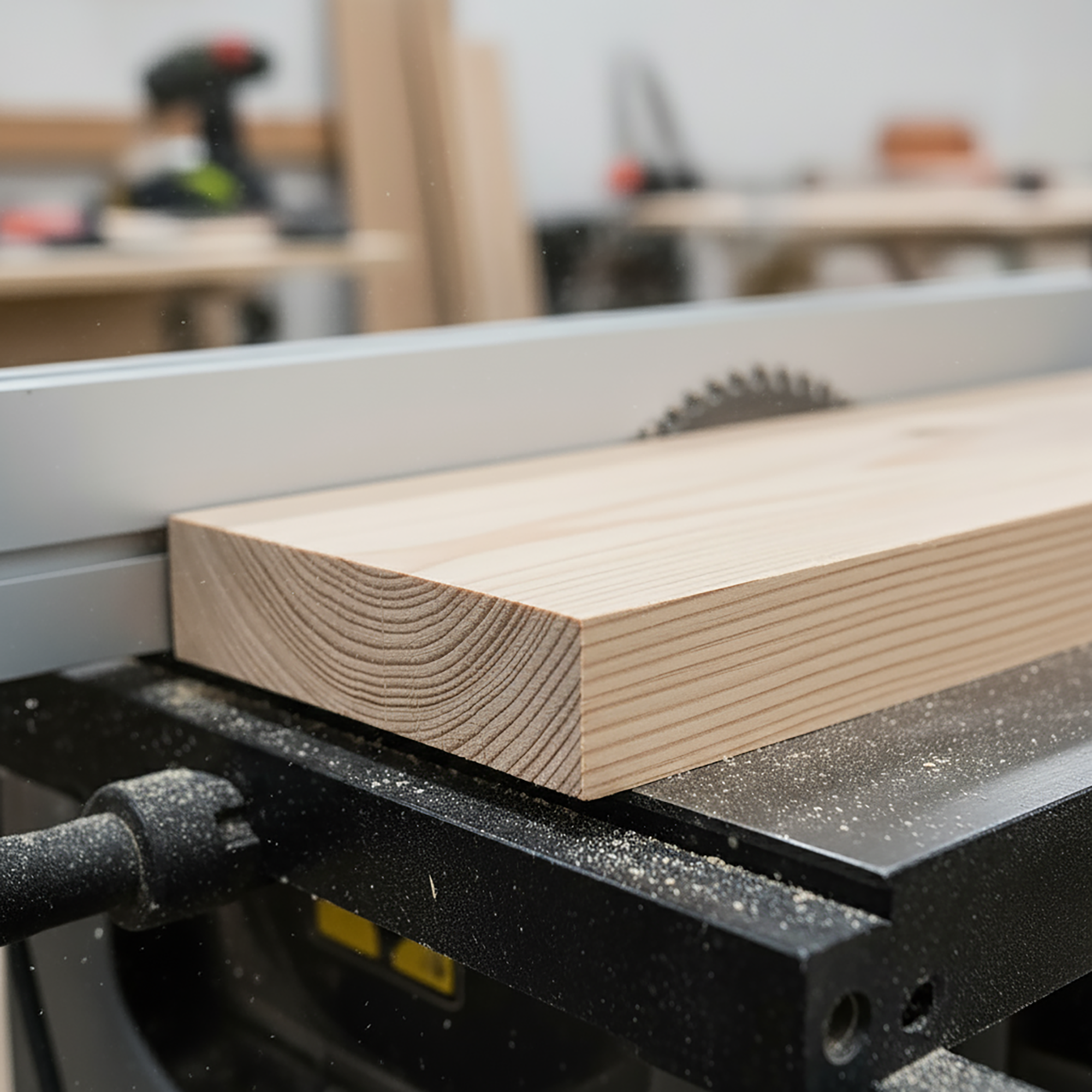
5. Specialty Blades: Beyond Wood
For projects involving metal, masonry, or plastic, you’ll need a specialty blade. Each is engineered with unique materials and grinds for safety and precision.
- Metal-Cutting Blades: Fewer TCG teeth, heat-resistant coating
- Masonry / Concrete Blades: Diamond-tipped segmented rims
- Plastic / PVC Blades: High tooth count with anti-melt coating
![]()
FAQs About Circular Saw Blades
Q: What’s the difference between a ripping blade and a crosscut blade?
A: Ripping blades have fewer, flat-topped teeth designed for fast cuts along the grain. Crosscut blades have more teeth with sharper angles for smooth cuts across the grain.
Q: Can I use one blade for all types of cuts?
A: A 40T combination blade can handle most DIY projects, but for the cleanest results, use specialized blades—24T for ripping, 60T for fine finishing, and 80T+ for plywood or laminate.
Q: What does ATB or FTG mean on a saw blade?
A: ATB stands for Alternate Top Bevel—ideal for smooth crosscuts and sheet goods. FTG means Flat-Top Grind—better for fast, rough ripping through solid wood.
Q: What’s the best blade for cutting plywood without splintering?
A: Choose a high-tooth-count ATB or TCG blade (60–100T). The POWERTEC 7-1/4″ 60T Finish Blade (14016) provides clean, chip-free edges on plywood and veneers.
Q: How long do circular saw blades last?
A: With regular use, a carbide-tipped blade can last for months of projects. Clean pitch buildup often and store blades dry to prevent corrosion and wear.
Safety Note: Always confirm the blade type matches your tool’s RPM and application. Refer to OSHA Woodworking Safety Guidelines for more information.

